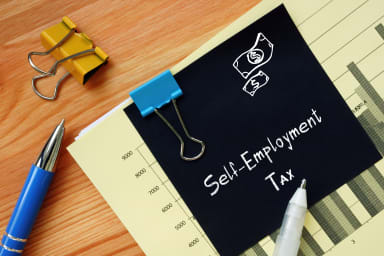“What am I forgetting?”
Understanding your quarterly business tax filing requirements when you’re a freelancer or are self-employed is not always easy. For instance, maybe something doesn’t add up. Now that you’re self-employed, maybe your bank account is bulging. Even though you’re working fewer hours, your take-home pay seems substantially higher than it was during your office days. What gives?
Flip the calendar to April. As you’re getting ready to submit your annual return, it dawns on you: You’ve been spending your share AND Uncle Sam’s share! And now he wants it back (plus interest).
A Different System for the Self-Employed
It’s true; for the self-employed, taxes are a pain. Not only do you have to pay your taxes in full — income tax and self-employment — but you have to pay them four times a year. Now that you’re working for yourself, the IRS expects you to submit a portion of your estimated taxes roughly every three months, in April, June, September, and January.
Luckily, quarterly filing is pretty straightforward: estimate your payment using the worksheet attached to Form 1040, and mail the IRS a check for the amount. But in order to avoid penalties for misfiling or paying late, you’ll need to do some homework.
Here are some tips for managing your quarterly payments that can help you maximize your deductions and reduce your taxes without getting in hot water with the IRS.
1. Get help from a pro when you’re starting out
If you’ve never filed quarterly estimated taxes, then no matter how much great advice I give you, you’re still likely to feel overwhelmed. Talk to friends or business contacts who are self-employed to find out how they handle their payments, and if you still feel in over your head, then hire an accountant or bookkeeper to walk you through the process.
2. Use last year’s return as a benchmark
When it comes to paying estimated taxes, the most important thing is making sure you pay promptly every quarter. This is the only way to avoid costly fines and penalties. If you underpay each quarter, you will still be liable for the difference, but you won’t be charged a penalty. And the best way to quickly estimate what you owe is to use your previous return as a guideline.
For example: If you paid a total of $5,000 in taxes last year, then when it’s time to post your first estimated quarterly payment, send the IRS a check for $1,250. If, when you file your annual return nine months from now, you find out that you owe slightly more than last year, then you can pay the difference without paying a penalty.
If this is your first year filing as a self-employed individual, then you won’t want to pay until you send your annual return, but be careful: if you’ve been working for a full year, you’re going to owe Uncle Sam a hefty sum.
3. Keep track of your income and expenses
It’s easy to underestimate your taxes. Hopefully, your business is growing every year, and if you earn more income, then you’ll owe more tax. And if you haven’t been keeping track of your income, then the taxes can come as a shock. Don’t let yourself be caught unaware.
Tabulate your income at the end of each quarter, or better yet every month. If you notice that you’re making more than last year, you can either recalculate your estimated payments or set aside some extra money for your annual return.
In addition to your income, keep careful track of your deductible expenses. An app like ZenBusiness Money can help with this. It helps to maintain a separate bank account for purchases related to your business.
When you’re self-employed, you’re your own accounting department. The most important thing is making sure you have all the information you need to avoid incurring penalties and fines.
Disclaimer: The content on this page is for informational purposes only, and does not constitute legal, tax, or accounting advice. If you have specific questions about any of these topics, seek the counsel of a licensed professional.
Aaron is an entrepreneur from Melbourne, Australia, and runs Ace Capital, a mortgage lending firm.
Tax Information and Resources




